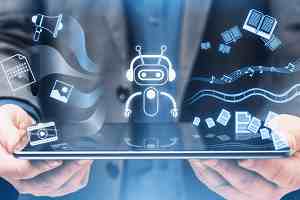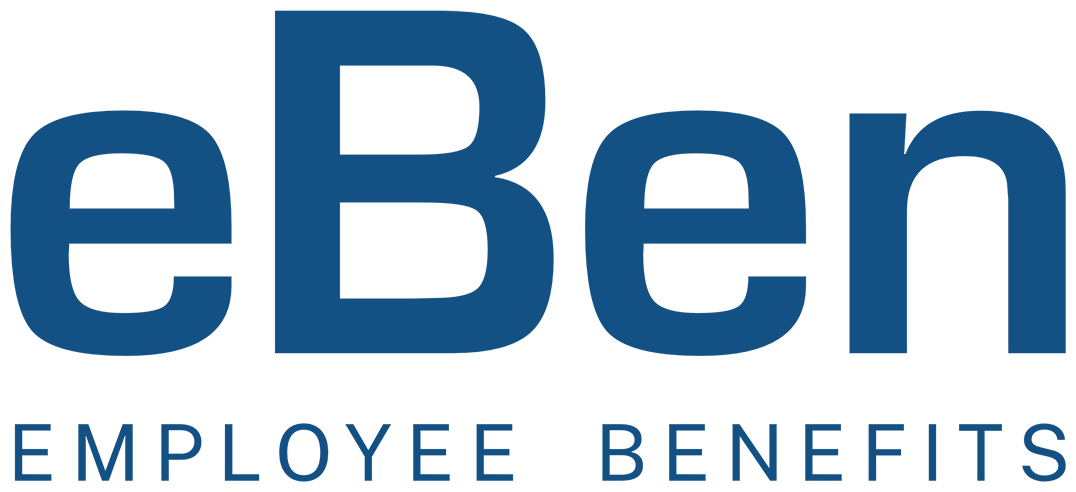Artificial intelligence (AI) is impacting nearly every facet of business and the area of employee benefits is no exception. The technology is not entirely new, as employers have been using AI to evaluate resumes and choose qualified job candidates for several years. However, with increased accessibility and efficiency, AI has vastly improved over time.
To pioneer positive change for your business, learn how AI is playing an important role in employee benefits management and what to consider when implementing this technology into your benefits plan.
AI-Powered Benefits Enrollment
and Administration
 AI technologies are able to streamline benefits enrollment and administration processes. These advanced tools act as digital assistants that can help answer questions, provide valuable insights, and complete time-consuming tasks with ease. With these new advancements, the use of AI in employee benefits can help save both time and money.
AI technologies are able to streamline benefits enrollment and administration processes. These advanced tools act as digital assistants that can help answer questions, provide valuable insights, and complete time-consuming tasks with ease. With these new advancements, the use of AI in employee benefits can help save both time and money.
Streamlining Benefits Enrollment Processes with
AI-Driven Platforms
The emergence of AI-driven platforms is transforming the employee benefits landscape. The market’s newest platforms use generative AI to simplify enrollment by giving employees access to a virtual assistant who will help them understand their options and walk them through the enrollment process. These tools are user-friendly with their conversational interface that allows and encourages employees to ask questions and get instant support.
Leveraging AI for Benefits Communication and Education
AI has also revolutionized benefits communication and education by providing employees with a more interactive and personalized experience. These tools are designed to give workers rapid access to information, as well as instant feedback about benefits plans, enrollment periods, and coverage details.
AI can also be integrated into other HR systems and databases to improve communication and engagement. Using tools like chatbots, businesses can streamline their responses through automation by automatically scheduling meetings, managing calendars, and sending
email responses.
Personalization and Tailored
Benefits Offerings
AI has made it easy to tailor benefits to individual employees for a more
customized experience.

- During the open enrollment period, companies can use AI to send personalized reminders to employees to enroll before the deadline.
- Chatbots can also be personalized to respond to employees based on their individual needs and preferences.
- Modern AI tools are capable of having complex conversations and generally improve in accuracy as they’re fed more data.
Utilizing AI Algorithms to Analyze Employee Data and Preferences
AI-driven tools can be developed to efficiently analyze employee data and preferences. These tools often use innovative algorithms capable of analyzing large amounts of employee data, such as:
- Health records
- Demographics
- Utilization patterns
- Costs
- Employee benefits goals
Using this information, AI tools can help gear benefits offerings toward individual employees to keep participation rates high.
Enhancing Employee Engagement Through Personalized
Benefits Communication
Personalized benefits communication can help boost employee engagement and result in an overall happier and healthier workforce. Most employers recognize that their employees
have diverse:
- Backgrounds
- Communication styles
- Personal preferences
Employee benefits need more than standard settings; AI can be used to tailor your business’s communication efforts to meet the individual needs of your employees. This could be as simple as personalized messages or tailored benefits platforms.
Challenges and Considerations in Implementing AI in
Benefits Management
Implementing AI into benefits management presents both opportunities and challenges. While AI technologies have had a profound impact in many fields like education, software, and marketing, they are still fairly new to benefits administration.
Although most benefits leaders remain optimistic about the power of AI, they are still cautious about the potential risks, especially when it comes to data accuracy and security. Some leaders are also concerned about the employee experience when it comes to desiring a “human touch” in benefits management.
Data Privacy and Security Concerns
More prevalent concerns surrounding the use of AI in benefits management relate to data privacy and security. The disclosure of personal employee data to AI tools puts companies at risk for potential data breaches and similar cyberattacks. In addition, there is also concern that the personal data collected and processed by AI tools could lead to liability issues due to non-compliance violations.
Barriers to Adoption and Integration with Existing HR
Technology Infrastructure
While the adoption of AI in employee benefits management can offer undeniable advantages, there are also some barriers to consider. As AI technologies continue to evolve, many of these tools still struggle to effectively integrate with existing HR technology infrastructures. For many companies, the adoption of advanced AI technologies may require a complete overhaul, which can mean significant costs.
With AI growing at an unprecedented rate, the future of these technologies appears bright, especially for businesses open to change. In time, many employers will discover the countless benefits of adopting AI to handle their benefits and compensation, such as enhanced employee satisfaction, reduced HR workload, compliance assurance, and cost savings. Companies that are better prepared are more likely to reap the benefits that AI integration in benefits management can deliver.


